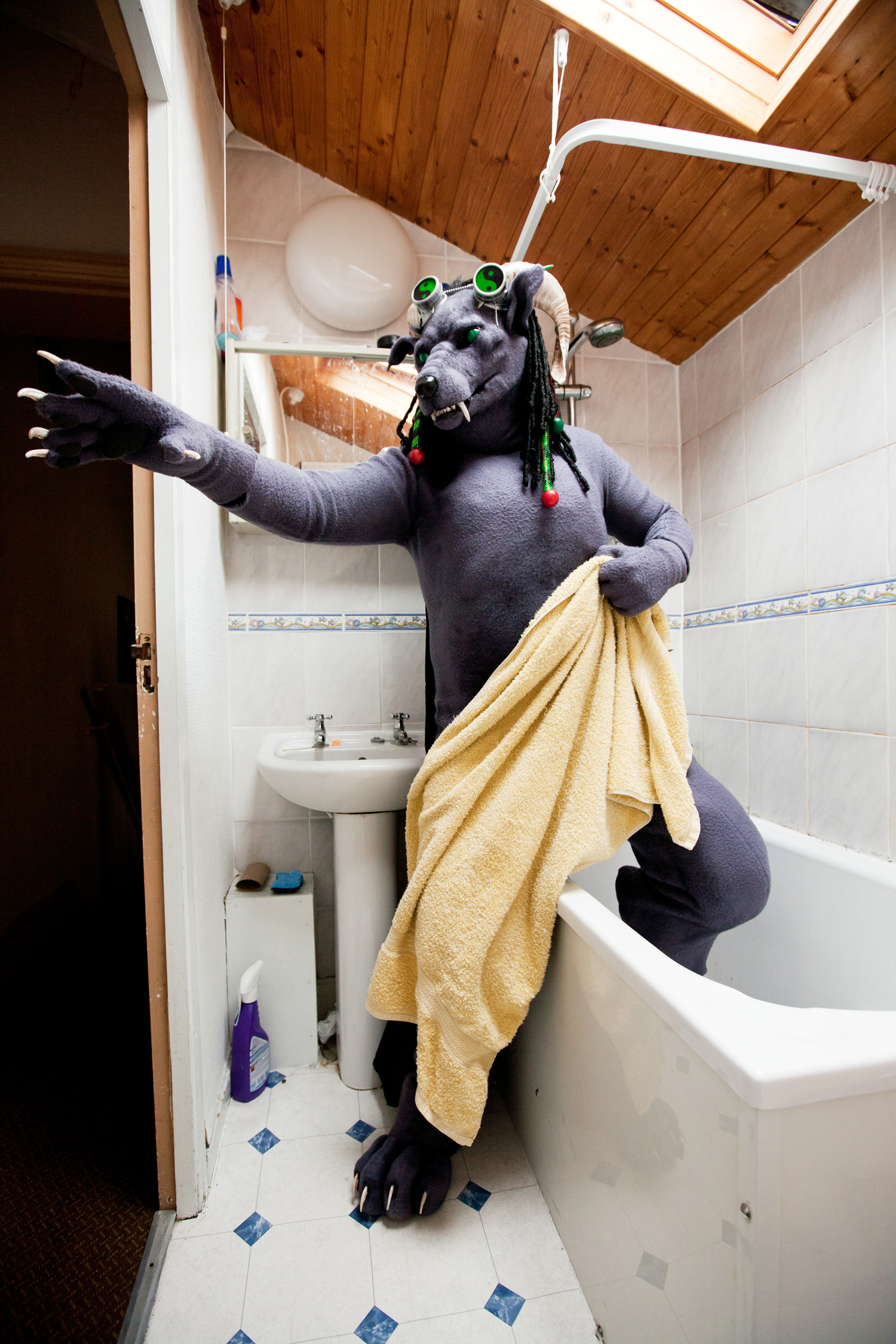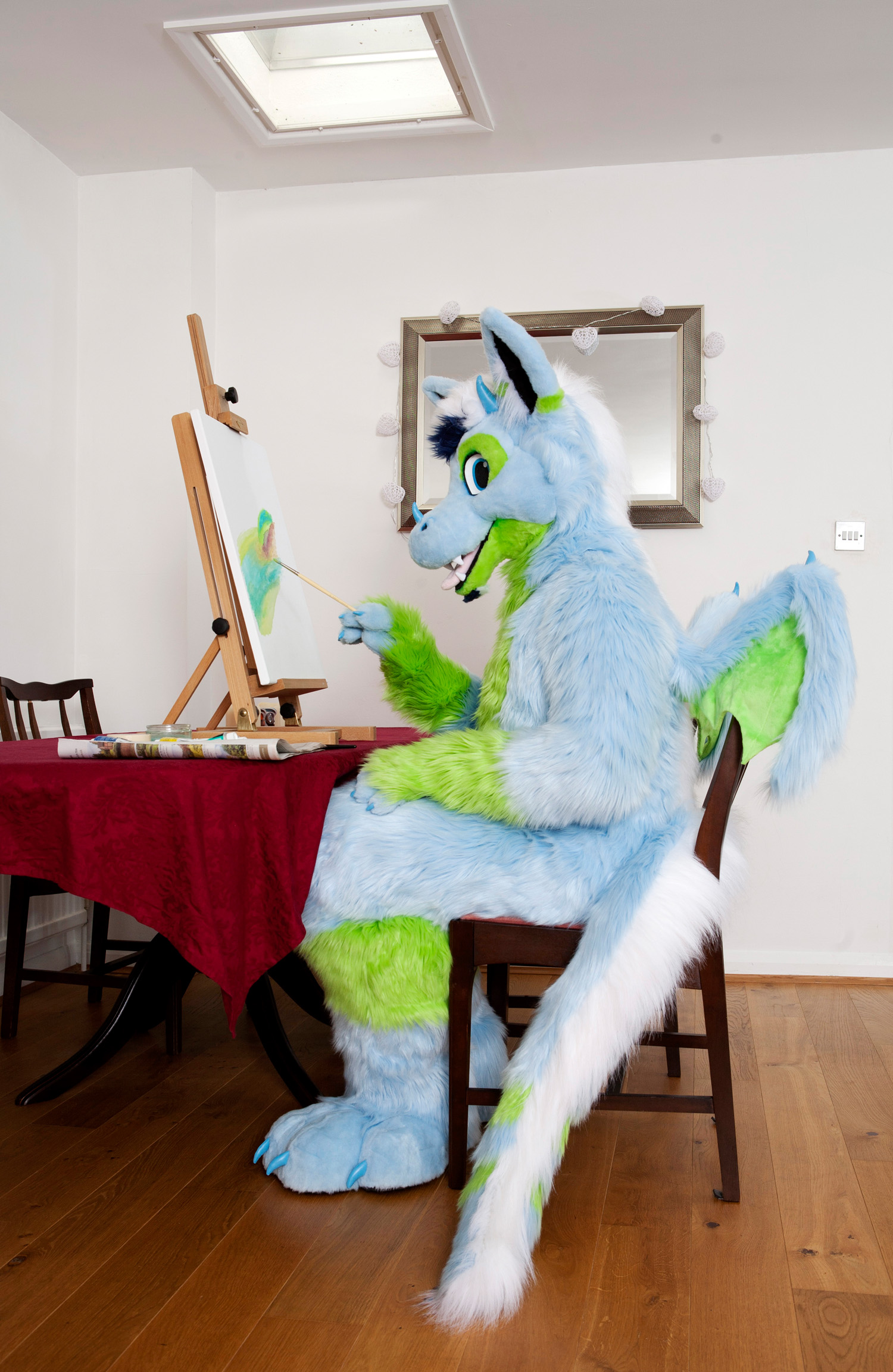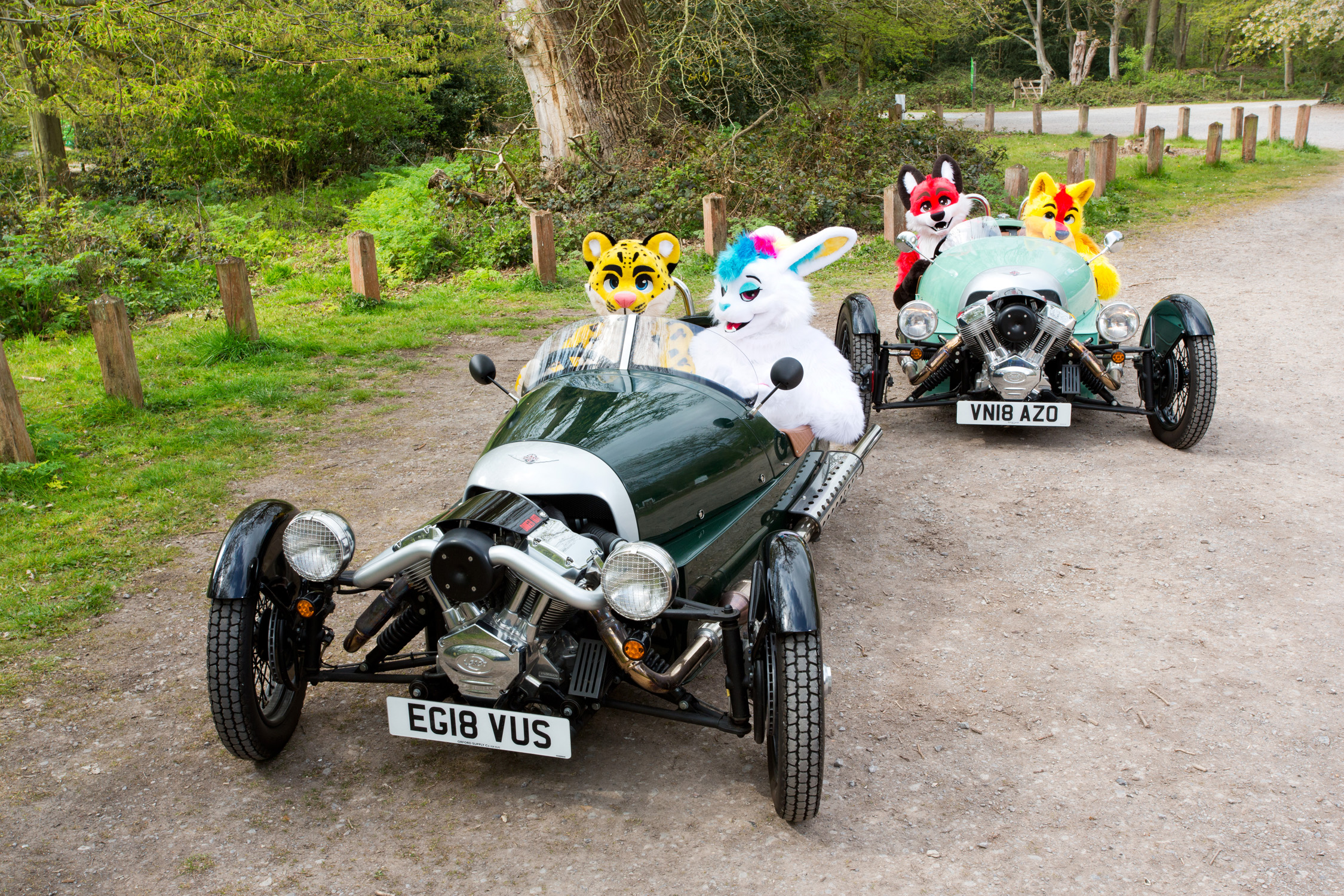Furries, fursuits and fursonas have been around as long as the internet has existed. The official birthday of the internet, January 1st 1983, coincides with the decade a group of US sci-fi convention guests bonded over their mutual love of anthropomorphic animals, initiating a fandom that would grow exponentially over the following decades. Decades on, furries have marked their territory across all corners of the web – they’re uploading comics to DeviantArt, selling DIY accessories on Etsy and even starting their own anti-fascist groups targeting the alt-right. At this point, any given piece of Twitter discourse isn’t truly legitimate without a fursona account interjecting.
Photographer Tom Broadbent isn’t a furry himself, but he has enjoyed getting to know the humans behind the masks for the last 14 years. After forming a trusting bond with this often misrepresented community, his 2018 photography book At Home With The Furries gave readers a rare peek into the ordinary domestic lives of the individuals who just so happen to like occasionally dressing up like a dog, a cat, or a dragon.
Videos by VICE
His latest collection, At Home With Xavier Fox, follows the life of a motorsports-loving red fox from Essex with a keen eye for late 90s Japanese supercars. We caught up with Tom to get the story straight from the horse’s mouth.

VICE: Hi Tom! When did you first discover furries?
Tom Broadbent: In 2008, I first met the furries through an event in London called RBW – Rather Brilliant Weekend – at a hotel in Bloomsbury. At the time, I was doing a shoot for a magazine, had just got out of the cab with my camera and saw a six foot wolf entering the hotel foyer, and I was transfixed! I couldn’t believe it. I’d read about the furries, I knew they dressed as characters that they created themselves, but seeing it in person was extraordinary.
As I went around taking portraits, I was meeting all these furries and asking them for permission to take their photo, about their character names and costumes and it really opened a door. It was just a great feeling. A lot of people were being daft, and a bit silly, and people would get away with acting out funny things in costumes that maybe you wouldn’t if you weren’t wearing one. I saw these people I thought, ‘This is just a great community’.

What inspired you to continue documenting them?
I thought: ‘There’s probably another project here beyond the terrible hotel carpets, but I just wonder what it could be, maybe I could photograph them at home?’ That set a seed in motion, and it was just a case of gaining people’s trust enough to allow me to photograph them at home. It took a good year of attending furry meets, which would happen roughly every three weeks, and just getting to know people.
One thing I did start to notice at the time, the way the furries were being portrayed in mainstream media was very unpleasant and unfair. I wanted my project to right some wrongs and show that actually, this is a great bunch of people doing really creative things.
Why do you think people are so drawn to fursonas?
There are loads of reasons. Some people come to it through roleplay, through artwork, but really it’s about meeting up and having a connection. My project looks at the more visual aspect – the fursuiters – but it’s not really about that per se. It’s about the idea of joy. It took me a long time to realise that’s what this work is about – but the furry community is about joy, really.

As you’ve been around the furry community for over a decade now, have you seen it grow or change at all? Or is the beauty of the community that it stays more or less the same?
It’s definitely changed, like any community changes over the years. There’s no doubt that conventions like Confuzzled, which is Birmingham in May, are expecting their highest turnouts after the pandemic. In the States, it’s really exploded in popularity. There’s two really big conventions, one in Pittsburgh called AnthroCon and Midwest FurFest in Illinois have now gotten attendees upwards of 10,000. As time goes on, it becomes more popular. I think the demographics changed too. There’s a lot more younger people doing it.
You’ve already touched on media misconceptions, but does your work give people who aren’t furries a chance to realise that people involved in this subculture aren’t somehow a threat?
My work was featured in The Sunday Times in 2013, and the reason I bring that up is because I had a number of furries drop me a line afterwards to talk about how it can’t be that weird if it was featured in The Sunday Times magazine, and how it gave them the confidence to go to their very first furry meet and make some friends. That really pulls at the heartstrings. It does normalise it, but I would never describe furries as a threat, it’s just people having fun over a shared interest.

How did you first meet the subject of your new book, Xavier Fox?
He’s a friend and a supporter. I first met him at a London furmeet, and he did my first book launch with me at The Photobook Café, where my next launch will be. He wasn’t in the first book but he came along in costume, and it was a really special night because, like with some of my other exhibitions, the furries come down in costume and really bring the work to life.
What makes Xavier so distinctive – I’ve seen from his Instagram that he likes cars?
He’s just such an amazing character, really creative. I really wanted to show a rounded picture of who his character is, including the fact that he spends a lot of time running a business ,which does a lot of really good things including transporting kids with special needs. It’s focusing on his identity and his wonderful outlook on life. But it’s also about cars.

I did a talk at The Royal Photographic Society last month about the new book, and whilst I was there I spoke about meeting the furries at Confuzzled in 2019, there was a separate car park full of high performance cars and Xavier had one of his incredibly overpowered Nissan GTRs, this Fast and Furious type car. There’s a subsection of furries called the Motor Furs, and it’s all furries who really like cars. One thing Xavier does, twice a year, is hire a race track for them to drive on and around 30-40 furries show up – not all of them driving, of course.
There are a lot of furries who are very generous, and doing a lot for the community and they’re not looking to get anything back. “You put a big smile on someone’s face,” Xavier told me. “You can see their genuine excitement. It’s a very rewarding thing to do.”
At Home With Xavier Fox is out on 5th May with a launch at The Photobook Café.








